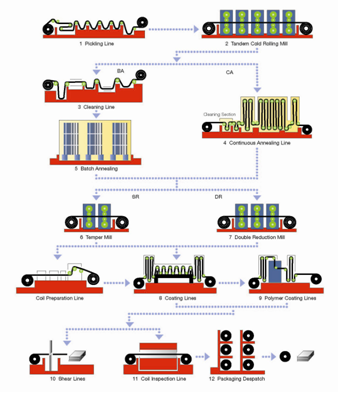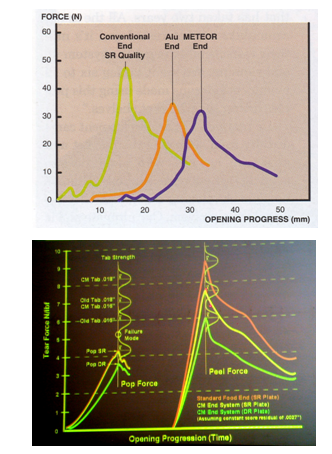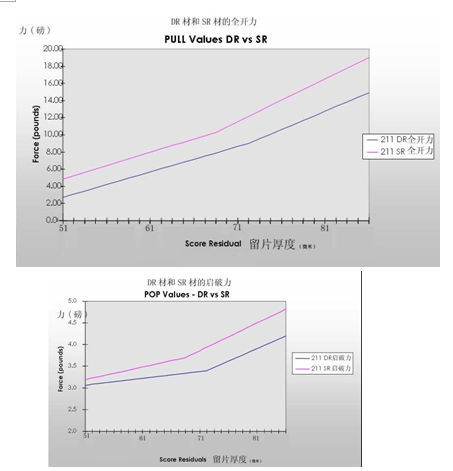The use of tinplate cans to package food has long been recognized as a "green package." But even so, hoping to be more environmentally friendly and energy-saving, and hoping to minimize the potential pollution, has become the most important requirement in the development and development of tinplate in the world today, and it is also the basic driving force for the development in this area in recent years. It promotes applications. The field keeps quietly changing.
(I) New-type tinplate
The development and application of the new tinplate is the pioneer and soul of the new canning and lid application. There is no new type of tinplate, and the “innovation†of the canning industry can only be minor repairs and minor changes. Therefore, large and medium-sized tinplate companies and groups in Europe and America, such as Corus and Usenor, are using more and more phenomena for two-piece cans and secondary cold-rolled sheets. It is an open secret that the composition of tinplate has been gradually adjusted. However, in Asia, "developed countries" and "sub-developed countries" have made it mysterious. So what kind of new products have been developed?
1, very thin once cold rolled (SR) tinplate
In the past two years, a cold-rolled tin plate with a thickness of only 015-0.17mm has appeared in Europe. To make it have higher mechanical strength, its steel base composition must be adjusted to reduce the manganese content first. The following table shows Corus A steel base compared with U.S. Japanese Table 1 A steel base and MR steel base
C Mg S P Si Cu Ni Mo N other
A: 0.04-0.08 0.18-0.35 0.02 0.02 0.03 0.08 0.08 0.02 0.002 0.02
MR: 0.13 0.60 0.05 0.02 0.02 0.20 0.15 0.05 0.02 0.02
The comparison table of MR steel bases in China (the one most used in China).
As can be seen from the table, the requirements for non-metal S, N, and metals Cu, Ni, and Mo for A-type steels are much stricter than for MR steels. With such a thin, once cold-rolled plate, the annealing temperature is significantly reduced. Therefore, the material can meet both the requirements of hardness (strength) and elongation (calcibility, easy to be washed).
2. Malei
Two years ago, a new secondary cold-rolled sheet with a sheet elongation of 10% (with a tempering degree of DR-8) appeared in Europe and the United States. Actually, 10 years ago (1997), the Lorraine sheet metal plant in France developed "a revolutionary metal material that was specially designed for easy opening" by changing the composition of the steel base and the annealing process. They used these words. The head of the French letter is linked together, ie "Meteor", as the name of this sheet. The Malei board is one of the official names of such products. The specifications are as follows: Table 2 Malei board performance
Ordinary tinplate
One cold rolling
3, no passivation of the tinplate
In the 1960s, in order to adapt to specific products (such as condensed milk, etc.), at the time the major tinplate production plants had been able to provide non-metallic salts, such as carbonates and phosphates, after passivating tinplate surfaces. The product. However, due to this type of passivation film, tin oxide surface cannot be prevented from continuing to oxidize in the air, so “dichromate passivation†has always been the best “only†choice for passivation of tinplate, although it will be More serious environmental pollution.
Environmental pollution is becoming more and more intolerable, leading to the development of "chromium-free passivation" that minimizes environmental pollution and that tin oxide surfaces do not continue to oxidize. In recent years, the use of passivation of titanium compounds has met the above two requirements. In recent years, people have used tin-passivated tinplate, coated with a film, and conducted real-pot test of sardine, tomato sauce and whole tomato in tomato sauce. It is said that the effect is good. For details, please refer to “International Food Science and Technologyâ€, Vol. 11, No. 3 (Vol 11, No 3, P223-227), 2005.
4, the popularity of laminated iron production
In recent years, in Europe and America, the tinplate production line process has expanded into the tinplate section of tinplate and has become a new manufacturing process. Obviously, in the past ten years, people have to evade the process of printing tinplate and all the paints, paints, solvents, etc., which cause serious pollution to people and the environment. The laminating iron that was more than a decade ago was the most important innovation that was developed. Today's laminated iron has already entered the category of conventional products from "new products." For example, when ordering from Corus, whether or not the purchased tinplate is to be laminated is already a production indicator that must be selected and stated.
Tinplate production flow chart:

However, in China's tinplate manufacturing and tin plating plant, there is no movement! This issue deserves serious attention from the entire industry. Otherwise, once certain environmental protection requirements are “globalizedâ€, if we spread to China soon, we will be caught unprepared, or pay the painful price of stopping production.
(II) Easy opening cover made of special secondary cold-rolled plate (Malei plate EOE)
As we all know, the advantage of using DR secondary cold-rolled sheet for easy opening is:
1. Save material 2. Easier to open 3. Better compressive strength
The reason why this type of material was not used for a long time is that on the one hand, the production of a cold rolled steel sheet has stricter control over the steel composition and process requirements, and on the other hand, the secondary cold rolled sheet has insufficient elongation, and during the process of capping the rivets. Easily broken.

We know that the standard "trilogy" in conventional open cover manufacturing is:
(1) First punched into a hemisphere (2) and then into a bubble (3) Finally pressed into a nail (pictured)
However, if a secondary cold-rolled Malei plate is used, although its elongation has greatly increased, the strength of the thin plate is still very large (the material is very hard). Therefore, in the "bubbling" operation, a special mold must be used to complete the stepped stamping (see figure). In order to make the cover plate material, the stress generated by the deformation is dispersed. Make the material more isotropic (secondary cold-rolling thin, due to re-rolling and resulting in different strengths of the sheet in both vertical and horizontal directions, that is, mechanically anisotropic). This is the key operation when deep-drawing the DR sheet. At this time, the material near the rivet exhibits a certain amount of stress due to continuous bending; the second forming step again forms a bubble, and the material near the rivet has no significant stress; in this case, since the material is equal to a sufficient amount Prestressed treatment. So when the cylindrical rivet is punched in the last step, it will not break and it will be very easy to mold.


The easy-open lid (EOE) thus created has a lower burst force (POP) and full opening force () than the corresponding aluminum lid, and its safety and opening feel are very good (see figure).
Sensor Light Bulb,Sensor Led Night Light,Motion Sensor Led Light,Human Motion Sensor Led Light
JIANGMEN MOSCOT OPTOELECTRONIC TECHNOLOGY CO.,LTD. , https://www.zjsensorsled.com